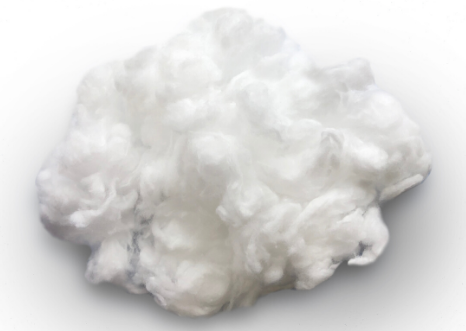Cotton does not come off the plant ready for commercial use. Rather, it must go through an intensive cleaning and purification process before it is suitable for us in nonwoven applications such as baby wipes, diapers and feminine hygiene products.. In order to rid cotton of potentially hazardous molds, fungi, bacteria, and other contaminants, it must be purified through, what the industry terms as “bleaching” process, often with hydrogen peroxide.
Difference Between Bleached and Unbleached Cotton
At Barnhardt, cotton is not bleached in the traditional sense; it goes through a process known as totally chlorine-free (TCF) bleaching, or oxygen bleaching. This process, which is completely safe for people as well as the environment, cleanses and whitens the raw cotton. Raw, unbleached cotton contains a much higher microbiological count; is nonabsorbent; and will have genetically modified (GMO) DNA unless the cotton was grown organically. It can be unsafe for human use, and thus isn’t used in medical and feminine hygiene applications.
In contrast, purified or bleached cotton has a much lower microbiological count; is far safer; absorbs well; never contains GMO DNA; and appears white in color, giving that look of purity that consumers expect in cotton. And this look is not deceiving: It is far purer and cleaner than unbleached cotton.
Hydrogen Peroxide vs. Bleach
There are many misconceptions surrounding purified or bleached cotton, mostly due to the word bleach. Bleach is actually a generic, catch-all term for any chemical product that is used industrially and domestically for cleaning, lightening, and stain removal. People often use it in reference to a dilute solution of sodium hypochlorite or “liquid bleach.” This is a far cry from the kind of bleaching used in cotton purification.
We use hydrogen peroxide to bleach raw cotton for use in personal care products and medical applications. Hydrogen peroxide is a simple chemical compound made up of two hydrogens and two oxygens. In its purest form, it is a clear liquid with a very pale blue undertone and is slightly more viscous than water.
Does Hydrogen Peroxide Bleach?
Hydrogen peroxide is a universal bleaching agent with several advantages that make it the bleaching agent of choice in multiple commercial applications. For one, peroxide bleaching requires less water, and there is no need for souring after bleaching. Peroxide-bleached products are also significantly more absorbent than those bleached by hypochlorite. Hydrogen peroxide is less likely to yellow; safer with respect to chemical degradation; and can be used on delicate fibers such as wool, silk, and jute.
So when you see the term “bleached cotton,” don’t get nervous – it’s not the same bleach that is used to clean pools and disinfect surfaces. In fact, bleached cotton is by far the safest option when compared to impurified or unbleached cotton. Commercial-use cotton is bleached in a totally chlorine-free (TCF) process with hydrogen peroxide, an extremely safe and eco-friendly bleaching agent. This simple, yet powerful compound is highly effective at removing all the nasty impurities from raw cotton while also giving it that lovely white color that we expect from our cotton products. Bleached cotton is purified cotton – and whichever phrase you hear, remember that it is the safe option.
For more information about Barnhardt Purified Cotton® processing, please visit our website page: https://www.barnhardtcotton.net/technology/cotton-processing/
